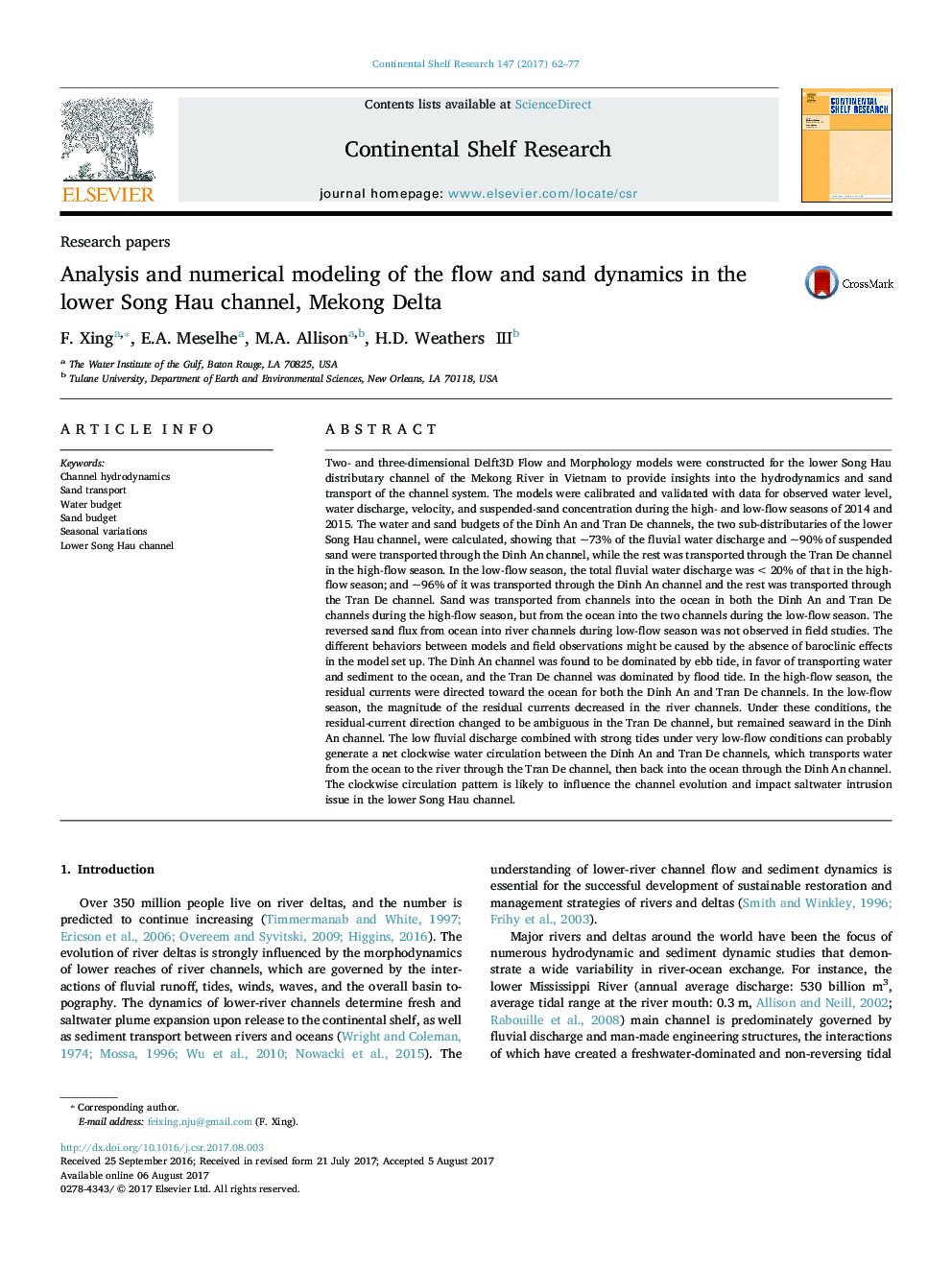| کد مقاله | کد نشریه | سال انتشار | مقاله انگلیسی | نسخه تمام متن |
|---|---|---|---|---|
| 5764365 | 1626066 | 2017 | 16 صفحه PDF | دانلود رایگان |

- This work provides insights on detailed flow and sand transport patterns of the lower Song Hau channel, Vietnam.
- The study documents seasonally variable circulation patterns between the Dinh An and Tran De channels.
- Modeling results show that the Dinh An channel conveys most of the water and sand to the ocean.
- Sand is transported from the river channels to the ocean during the high-flow season.
- Sand is transported from the ocean to the river channels during the low-flow season in the absence of baroclinic processes.
Two- and three-dimensional Delft3D Flow and Morphology models were constructed for the lower Song Hau distributary channel of the Mekong River in Vietnam to provide insights into the hydrodynamics and sand transport of the channel system. The models were calibrated and validated with data for observed water level, water discharge, velocity, and suspended-sand concentration during the high- and low-flow seasons of 2014 and 2015. The water and sand budgets of the Dinh An and Tran De channels, the two sub-distributaries of the lower Song Hau channel, were calculated, showing that ~73% of the fluvial water discharge and ~90% of suspended sand were transported through the Dinh An channel, while the rest was transported through the Tran De channel in the high-flow season. In the low-flow season, the total fluvial water discharge was < 20% of that in the high-flow season; and ~96% of it was transported through the Dinh An channel and the rest was transported through the Tran De channel. Sand was transported from channels into the ocean in both the Dinh An and Tran De channels during the high-flow season, but from the ocean into the two channels during the low-flow season. The reversed sand flux from ocean into river channels during low-flow season was not observed in field studies. The different behaviors between models and field observations might be caused by the absence of baroclinic effects in the model set up. The Dinh An channel was found to be dominated by ebb tide, in favor of transporting water and sediment to the ocean, and the Tran De channel was dominated by flood tide. In the high-flow season, the residual currents were directed toward the ocean for both the Dinh An and Tran De channels. In the low-flow season, the magnitude of the residual currents decreased in the river channels. Under these conditions, the residual-current direction changed to be ambiguous in the Tran De channel, but remained seaward in the Dinh An channel. The low fluvial discharge combined with strong tides under very low-flow conditions can probably generate a net clockwise water circulation between the Dinh An and Tran De channels, which transports water from the ocean to the river through the Tran De channel, then back into the ocean through the Dinh An channel. The clockwise circulation pattern is likely to influence the channel evolution and impact saltwater intrusion issue in the lower Song Hau channel.
Journal: Continental Shelf Research - Volume 147, 1 September 2017, Pages 62-77